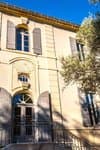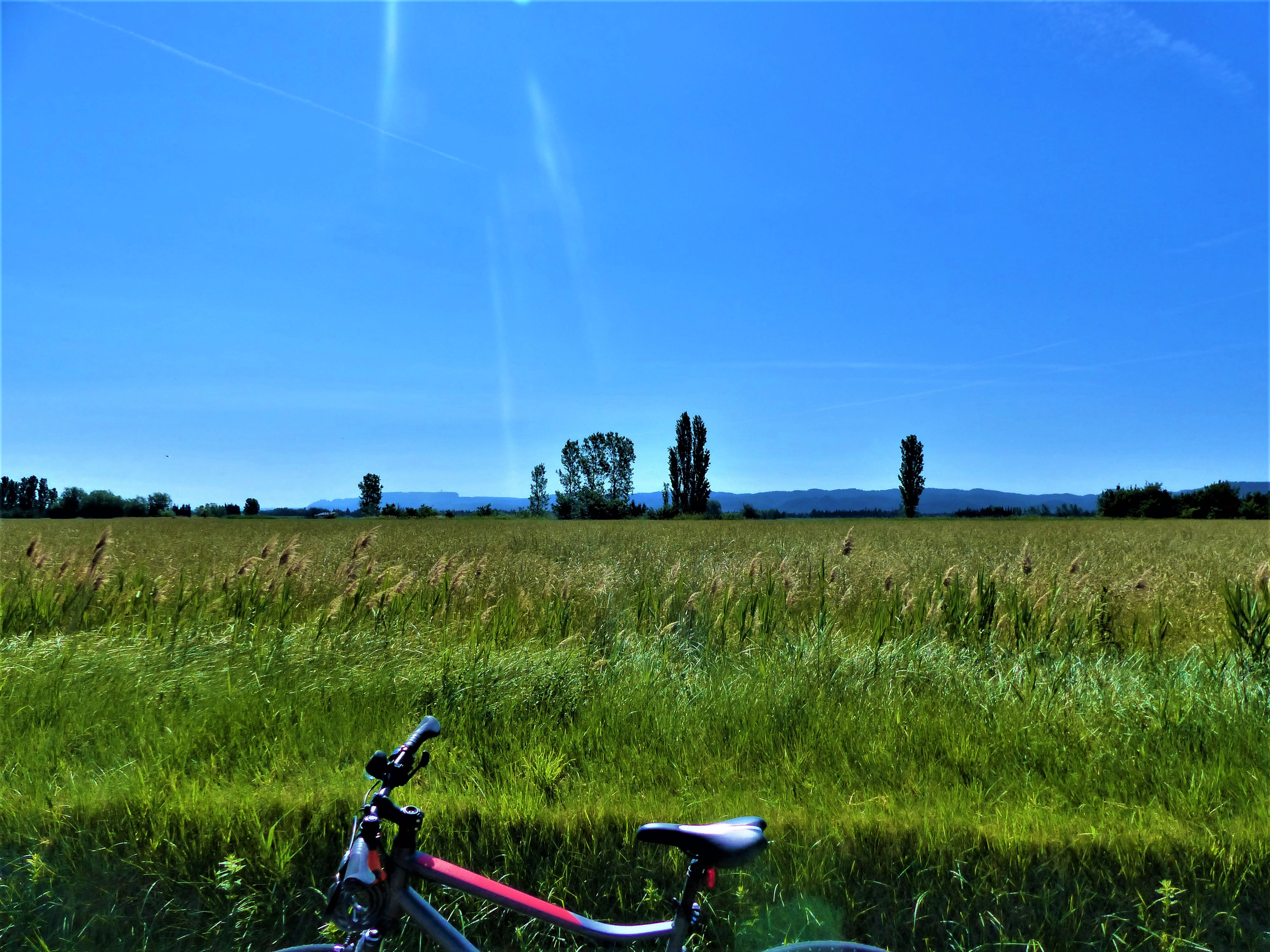
Bike ride in the Provencal countryside
After crossing the city of Tarascon with its exceptional heritage, the Grands Champs lowland that connects the Alpilles to the Montagnette is waiting for you. Its small verdant roads, to the peaceful tranquillity, you will go from village to village, each offering their batch of surprises to discover.
14 points of interest
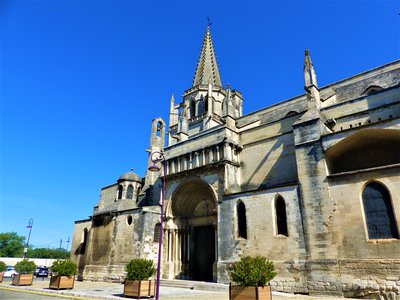
Collégiale royale de Sainte-Marthe - ©Rémi Sérange - PNR Alpilles  Patrimony and history
Patrimony and historySaint Martha Collegiate Church
The Saint Martha Collegiate Church is a unique building in the South Possessing one of the most beautiful portals in Provence, this church has the particularity to include a Romanesque part dating from the 12th century, a Gothic part of the 14th century, as well as other architectural styles. It houses the relics of St. Martha, venerated in Tarascon for several centuries.
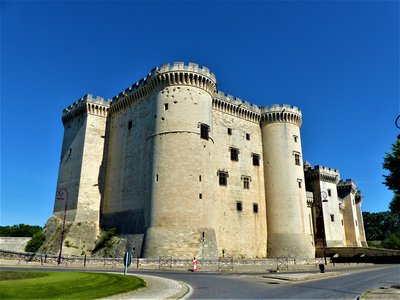
Château de Tarascon - ©Rémi Sérange - PNR Alpilles  Patrimony and history
Patrimony and historyTarascon Castle
The Tarascon castle - Rene d'Anjou Art Center - is built on a rocky island on the banks of the Rhone, while a ditch cut into the rock that can receive the waters of the river separates it from the city. With its remarkable state of conservation, this monument is one of the most beautiful medieval castles of France and Europe. It was built in the early fifteenth century. by architect Jean Robert, modeled on the castle of the Bastille.
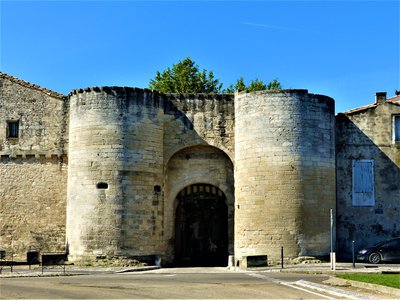
Porte de la Condamine - ©Rémi Sérange - PNR Alpilles  Patrimony and history
Patrimony and historyCondamine Door
The medieval town of Tarascon was surrounded by ramparts, with four secondary and three main gates, including the Condamine to the northeast. The construction of this door date of 1379, during the realization of the third enclosure of the city. The door, which was equipped with a drawbridge, is framed by two towers formerly crenellated, one of which is equipped with loopholes. Since then, they lost their alias and the gap that preceded them.

Roubine de la Faubourguette - ©Rémi Sérange - PNR Alpilles  Water and rivers
Water and riversRoubine of the Faubourguette
Typically Provençal, the term "roubine" designates a secondary canal. The Alpilles territory benefits from the proximity to the Rhône and the Durance. Since ancient times, man has sought to divert and funnel these rivers to deliver the water needed for his crops. La roubine de la Faubourguette is a secondary canal that extends the Pourrie roubine in the area of Breuil and finishes its course in the Vigueirat canal.
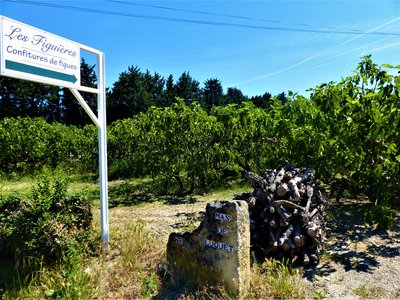
Plantation de figuiers - ©Rémi Sérange - PNR Alpilles  Savoir-faire
Savoir-faireLuquet Mas
The farmhouse Luquet, also called "Figuières" is a family farm that produces figs (not chemically treated) and various processed products such as jam, chutney and fig mustard. Specialized in this production for 40 years, it has 12 hectars where a collection of 150 figs grows (black, white, green, variegated, gray or violet fig).
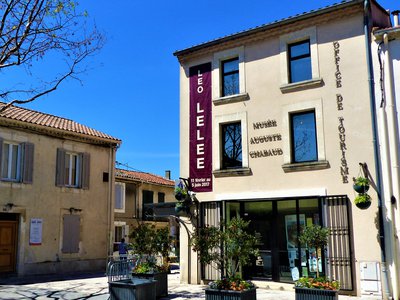
Musée Auguste Chabaud - ©Rémi Sérange - PNR Alpilles  Patrimony and history
Patrimony and historyAuguste Chabaud Museum
Auguste Chabaud, born October 3, 1882 in Nimes and died May 23, 1955 in Graveson, is a French painter and sculptor. He is part of the pioneers of the modern painting and represents the landscapes, the gestures of daily life, as well as the massif of the Montagnette in his works. His expressionist-fauvist style differentiates him from other French painters of his generation. The Auguste Chabaud Museum presents a permanent collection of works by this artist.
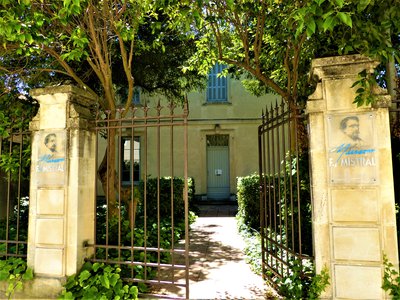
Entrée du musée Frédéric Mistral - ©Rémi Sérange - PNR Alpilles  Patrimony and history
Patrimony and historyMistral Museum
This museum is dedicated to the Provencal writer Frédéric Mistral (1830-1914). The latter had three successive residences at Maillane. Forced to leave the mas of the Judge at the death of his father, he settled in the house of the Lizard with his mother before his notoriety allowed him to build his own house, which now houses the museum. This house, its garden and outbuildings are classified as historical monuments since November 10, 1930.
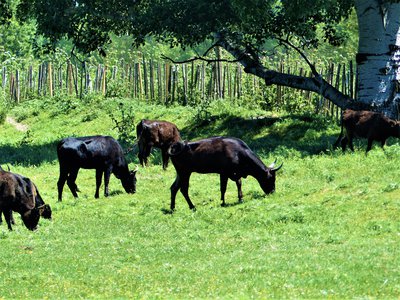
Elevage de taureaux camarguais - ©Rémi Sérange - PNR Alpilles  Elevage et pastoralisme
Elevage et pastoralismeRaço di Biou
Bovine breeding in the Alpilles is linked to a local tradition: The bullfighting. The manades raise the Camarguaise local breed "Raço di Biou" to practice the Camargue races (or races with the cockade). This consists of getting as close as possible to the bull to seize the cockade attached between his horns. Cattle that are not selected for these races can be valued with the PDO Taureau de Camargue label, created in 1996.
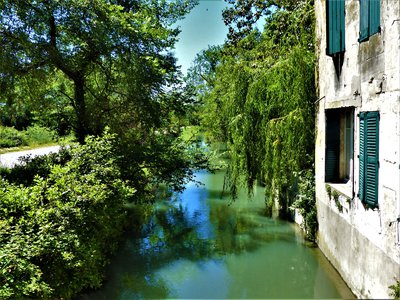
Canal du Vigueirat bordé par une habitation - ©Rémi Sérange - PNR Alpilles  Water and rivers
Water and riversVigueirat Canal
This canal was built between 1642 and 1647 to clean up the "Vigueirie" (agricultural lowland between the Montagnette and the Alpilles) by draining the waste water to the sea. The Vigueirat Canal, which originates in the town of Tarascon, extends for 46 km and is partly classified in the National Nature Reserve Marais du Vigueirat. The outfall is located in the navigation channel from Arles to Bouc.

Croix annonçant Notre-Dame-du-Château - ©Rémi Sérange - PNR Alpilles  Patrimony and history
Patrimony and historyCross of Notre-Dame-du-Château Chapel
This cross announces the path leading to the Romanesque chapel Notre-Dame-du-Château. This is mentioned for the first time in 1180 and was restored around 1419. Erected on the hill Saint-Michel-de-Briançon, it dominates the village of Saint-Etienne du Grès, former parish of the city of Tarascon. It was a priory chapel dependent on the Abbey Saint-Laurent of Avignon. Since 1350 she welcomed the "Belle Briançonne", a statue of the Virgin to the Child very famous from the Tarasconnais people.
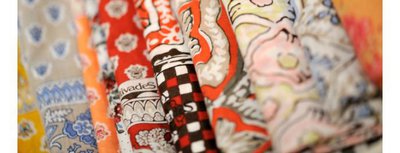
Les Olivades : tradition et innovation textile - ©DR  Savoir-faire
Savoir-faireLes Olivades
Léonard Quinche joined forces in 1818 with two Tarasconnais and created an Indian factory in Saint-Etienne du Grès. In 1948, the company is taken over by Pierre Boudin. In 1977, he created "Les Olivades", a family business that perpetuates the ancestral art of printing on fabric from the south of France, while adapting it to the current life. The Les Olivades brand has been a forerunner in terms of high-end products manufactured and sold by the same company.
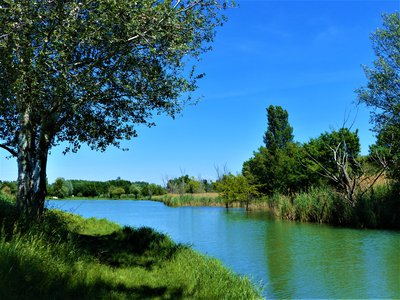
Étang de Rambaille - ©Rémi Sérange - PNR Alpilles  Water and rivers
Water and riversRambaille Pond
The Rambaille pond is one of the few lakes of the Alpilles. Artificial and in which one it is forbidden to swim, it draws its water in the Vigueirat canal and has an area of ??2.5 hectares. It makes the happiness of the fishing lovers from the surroundings. Most white-fleshed fish, as well as pike, trout and zander can be caught.

Chapelle Saint-Gabriel - ©Rémi Sérange - PNR Alpilles  Patrimony and history
Patrimony and historySaint-Gabriel Chapel
In the early Middle Ages, a first church was erected instead of an old pagan place of worship. Dedicated to the Archangel Gabriel, it is an important step on the road to Santiago de Compostela. The current chapel was built in the 12th century. and testifies to the splendor of the beginnings of Romanesque art in Provence, as shown by its architecture: its facade, its monumental portal, its carved friezes, or its oculus decorated with symbols of the four evangelists.
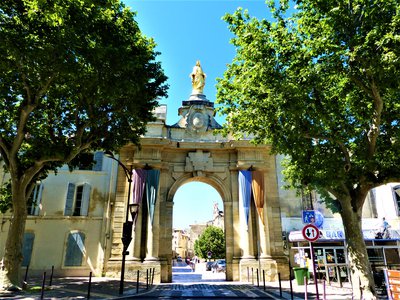
Porte Saint-Jean - ©Rémi Sérange - PNR Alpilles  Patrimony and history
Patrimony and historySaint-Jean gate
The Porte Saint-Jean dates from the 14th century. and takes its name from the Saint-Jean-Baptiste chapel. This is one of the three main gates of the walled city. At its creation, it was equipped with crenellations and barbican. Then it was rebuilt in 1758 in its current form, during the modifications made to the southern rampart. In 1866, the municipality had erected a statue of the Virgin in golden cast iron, with the inscription: Posuerunt me custodem", which translates to "They made me their guardian".
Description
From the parking, go past the castle on the left. At the roundabout take the first exit, Itam Boulevard At the Porte Condamine roundabout, follow the 1st exit, boulevard Gambetta. Continue 100 m then turn left on the D80 towards Maillane. Continue on this road until you cross the D570n.
1- Cross the D570n and follow the D80a towards Maillane for 3 km. After the main entrance of the Breuil estate, turn left on the paved road of Mas de Terras. Continue for 1 km and turn left on the tarmac road of Mas de la Musique. Continue until the D80 then switch to the right.
2- At the roundabout marking the entrance to Graveson, take the 1st exit, Chateaurenard road. Turn immediately left on Lavandin Street towards the center. Continue to the Sundial hotel and turn left on Chemin du Moulin. 200 m further, past the Tourist Office and the Auguste Chabaud Museum.
3- Pass the National Course, take the Jeanne d'Arc street after the Virgin statue and turn right on the Provence street. Then turn right on the General de Gaulle avenue then left on Lieutenant Atger Avenue. At the roundabout continue on the D5 until the entrance to Maillane.
4- Cross Maillane via the Jousse d'Arbaud alley, General de Gaulle avenue and Poet's Avenue. Continue on the D27, for 4 km, to the business area of ??Massane. At the crossroads with the D99 (Caution, traffic!), Turn left then continue for 400 m and turn right on the D27 towards Les Baux-de-Provence.
5- Drive 1.5 km and turn right on the old road to Arles after crossing the crossing with the Mas-Blanc road. Continue to Saint-Etienne du Grès, cross the village and continue on the D32. At the crossroads with the D33, take the left to join the Saint-Gabriel chapel 100 m further.
6- At the Saint-Gabriel chapel, retrace your steps to the last crossroads and continue towards Tarascon. (Caution, traffic!) At the roundabout take the 3rd exit, D570N, then turn right on the Lansac road. At the intersection with the D35, turn right and drive to Tarascon and continue for 3.5 km.
7- Turn left on the D970, then at the next crossroad, turn left going under the level crossing. At the roundabout, take the 2nd exit, D99 towards Beaucaire. At the next roundabout, take the first exit and turn immediately left on the République Avenue to reach your starting point.
- Departure : Avenue of the Republic car park, Tarascon
- Arrival : Tarascon
- Towns crossed : Tarascon, Saint-Étienne-du-Grès, Graveson, Maillane, Saint-Rémy-de-Provence, and Mas-Blanc-des-Alpilles
Forecast
Altimetric profile
Recommandations
For your safety, and for the preservation of forest areas, access to natural areas is regulated from June to September. Inquire during the summer period on 08 11 20 13 13 (price of a local call) or on www.bouches-du-rhone.pref.gouv.fr Download the application for free MYPROVENCE ENVIE DE BALADE (available on Appstore and Android Market).
Information desks
Bureau d'information touristique (BIT) de Tarascon en Provence
62 rue des Halles, 13150 Tarascon en Provence
House of the Alpilles Regional Nature Park
2, boulevard Marceau, 13210 Saint-Rémy-de-Provence
Located in the heart of the city centre of Saint-Rémy-de-Provence, the House of the Alpilles Nature Park welcomes you to its completely renovated premises. This new vibrant place is multifunctional: it accommodates the Park's engineering team but also has a public reception space and showrooms. A true resource centre of the Park's heritage, it aims to support and promote locals, visitors and tourists on all 16 municipalities of the Park.
Open Monday to Friday, from 9 am at 12:30 pm and from 1:30 pm to 5 pm.
Free admission.
Transport
Look for transit times on the website www.lepilote.com in the town of Tarascon.
Access and parking
2 minutes from Beaucaire by the D999.
Parking :
Report a problem or an error
If you have found an error on this page or if you have noticed any problems during your hike, please report them to us here:


